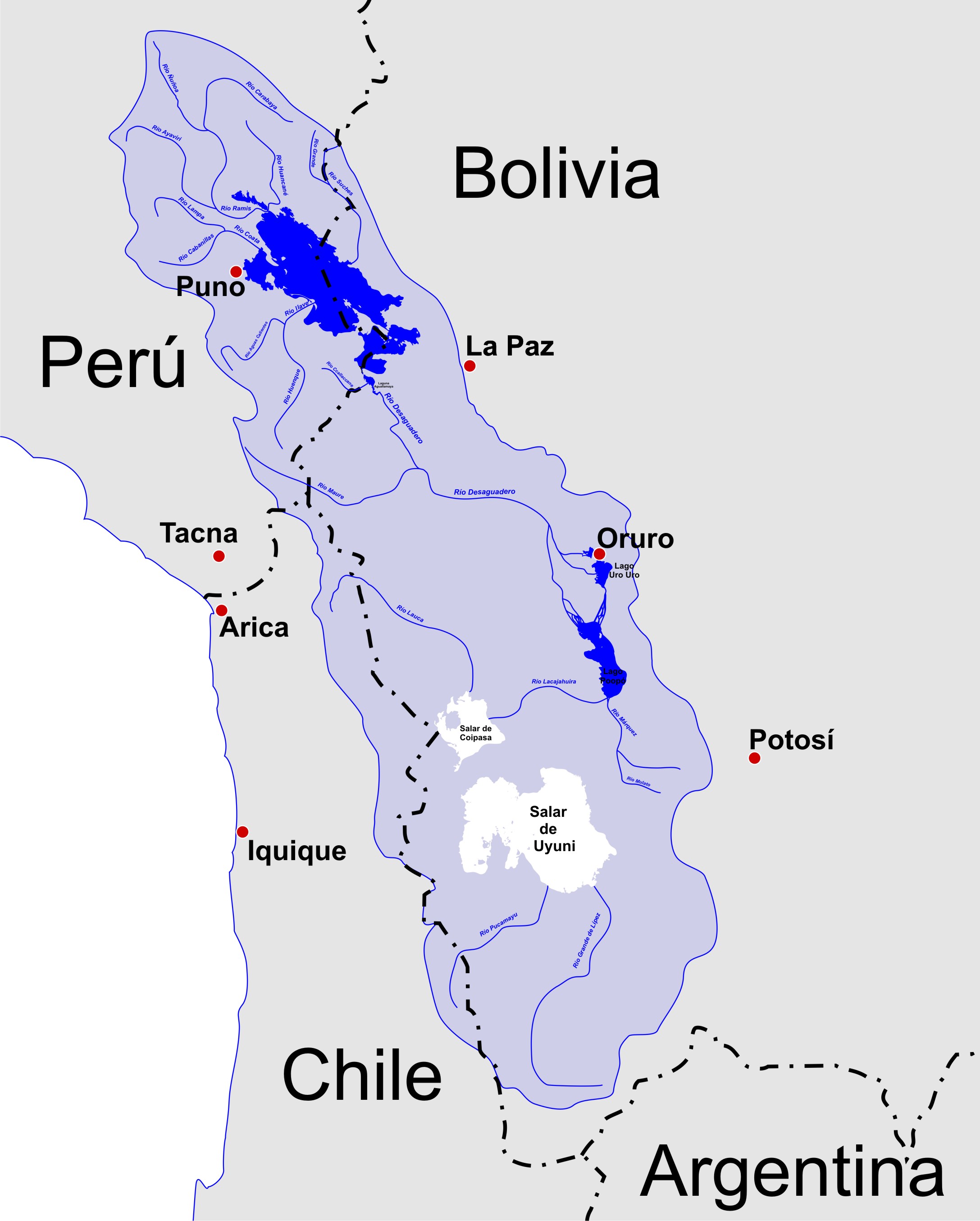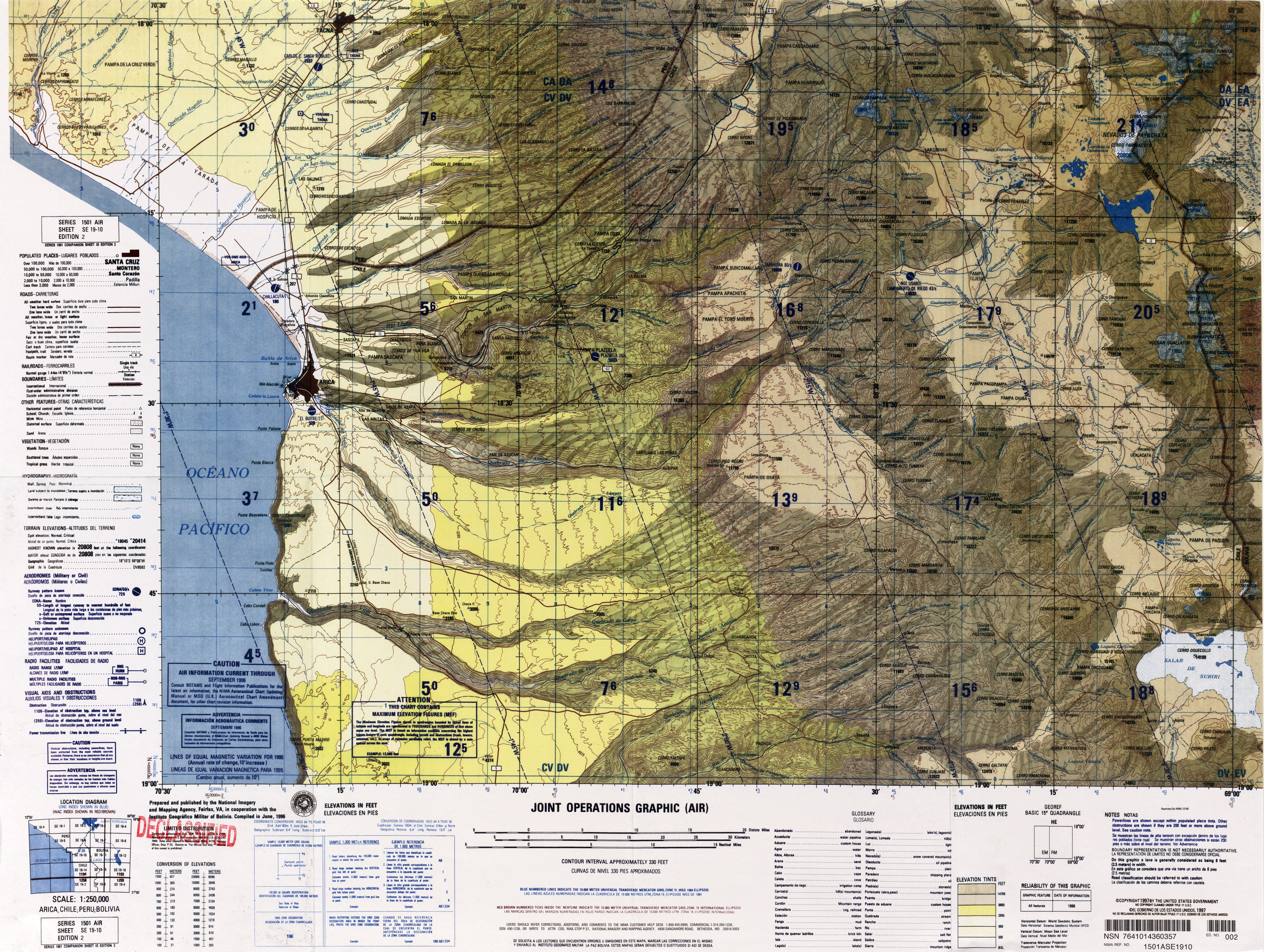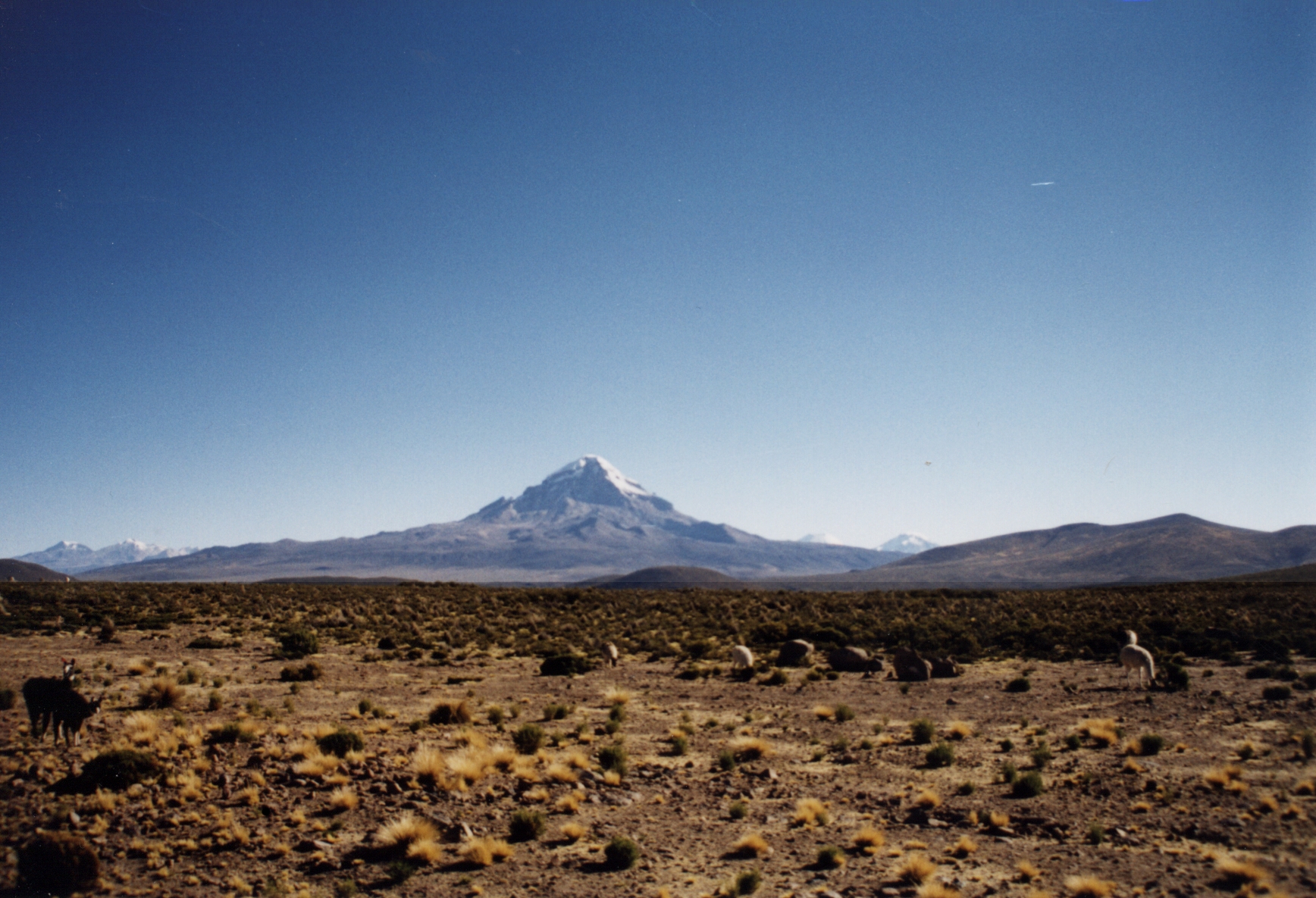|
Guallatiri
Guallatiri is a high volcano in Chile. It is located southwest of the Nevados de Quimsachata volcanic group and is sometimes considered to be part of that group. It is a stratovolcano with numerous fumaroles around the summit. The summit may be composed of either a lava dome or a pyroclastic cone, while the lower flanks of the volcano are covered by lava flows and lava domes. The volcano's eruptions have produced mostly dacite along with andesite and rhyolite. Guallatiri has been active in historical times with a number of eruptions, the latest in 1960 but a large prehistorical eruption took place 2,600 years ago. Fumarolic and seismic activity is ongoing and has resulted in the deposition of sulfur and other minerals on the volcano. The volcano is covered by an ice cap above elevation that has shrunk and fragmented during the course of the 20th-21st century. Guallatiri, along with several other volcanoes, is part of Lauca National Park and is monitored by SERNAGEOMIN. ... [...More Info...] [...Related Items...] OR: [Wikipedia] [Google] [Baidu] |
Acotango
Acotango is the central and highest of a group of stratovolcanoes straddling the border of Bolivia and Chile. It is high. The group is known as Kimsa Chata and consists of three mountains: Acotango, Umurata () north of it and Capurata () south of it. The group lies along a north–south alignment. The Acotango volcano is heavily eroded, but a lava flow on its northern flank is morphologically young, suggesting Acotango was active in the Holocene. Later research has suggested that lava flow may be of Pleistocene age. Argon-argon dating has yielded ages of 192,000±8,000 and 241,000±27,000 years on dacites from Acotango. Glacial activity has exposed parts of the inner volcano, which is hydrothermally altered. Glacial moraines lie at an altitude of but a present ice cap is only found past of altitude. The volcano is a popular hiking route in the Sajama National Park and Lauca National Park. It is on the border of two provinces: Chilean province of Parinacota and Bolivian provi ... [...More Info...] [...Related Items...] OR: [Wikipedia] [Google] [Baidu] |
Cerro Capurata
Cerro Capurata, also known as ''Elena Capurata'' or ''Quimsachatas'' is a stratovolcano in the Andes of Bolivia and Chile. To the south of Capurata lies Cerro Casparata and straight west Guallatiri. Geography and geomorphology It is on the border of the Parinacota Province of Chile (Putre commune) and of the Bolivian province of Sajama (commune Turco). Compared to Acotango and Humurata, Capurata's rocks are relatively well preserved. Some hydrothermal alteration, partly associated with fumarolic activity, is present however. The total volume of the edifice is and has been eroded by glaciers. The volcano is formed by lava domes, lava flows and pyroclastic flows. Sulfur deposits formed by solfataras are also found on Capurata. The west side of the mountain is covered with snow and ice. Two crater depressions on the summit have an appearance that suggests a Holocene age. Incan Ruins and First Ascent A ruin towards the northern site of the summit. The structure was probably ... [...More Info...] [...Related Items...] OR: [Wikipedia] [Google] [Baidu] |
Altiplano
The Altiplano (Spanish for "high plain"), Collao (Quechua and Aymara: Qullaw, meaning "place of the Qulla") or Andean Plateau, in west-central South America, is the most extensive high plateau on Earth outside Tibet. The plateau is located at the latitude of the widest part of the north-south-trending Andes. The bulk of the Altiplano lies in Bolivia, but its northern parts lie in Peru, and its southwestern fringes lie in Chile. There are on the plateau several cities in each of these three nations, including El Alto, La Paz, Oruro, and Puno. The northeastern part of the Altiplano is more humid than the southwestern part, which has several salares (salt flats), due to its aridity. At the Bolivia–Peru border lies Lake Titicaca, the largest lake in South America. Farther south, in Bolivia, there was until recently a lake, Lake Poopó, but by December 2015 it had completely dried up, and was declared defunct. It is unclear whether that lake, which had been the second-largest in ... [...More Info...] [...Related Items...] OR: [Wikipedia] [Google] [Baidu] |
Nevados De Quimsachata
Kimsa Chata or Kimsachata (Aymara and Quechua ''kimsa'' three, Pukina ''chata'' mountain,Teofilo Laime Ajacopa, Lengua Pukina en Jesús de Machaca, referring to Alfredo Torero ("Reflexión acerca del pukina escrito por Alfredo Torero ... Pukina '''' - Castellano ''Cerro'' - Palabras relacionadas en aymara ''Qullu''") (English: mountain). ... Existencia de palabras pukinas en Jesús de Machaca: Qullunaka (cerros): ''Kimsa Chata'' "three mountains", Hispanicized ''Quimsa Chata, Quimsachata'') is an -long volcanic complex on a north–south alignment along the border between Bolivia and Chile, overseeing Chungara Lake. It contains three peaks, all stratovolcanoes. The group is formed - from north to south - by Umurata (), Acotango () and Capurata () (also known as Cerro Elena Capurata). The active volcano Guallatiri (Wallatiri) west of Capurata is not part of the group. See also * List of volcanoes in Bolivia * List of volcanoes in Chile The Smithsonian Institution's Global ... [...More Info...] [...Related Items...] OR: [Wikipedia] [Google] [Baidu] |
Lauca National Park
Lauca National Park is located in Chile's far north, in the Andean range. It encompasses an area of 1,379 km2 of altiplano and mountains, the latter consisting mainly of enormous volcanoes. Las Vicuñas National Reserve is its neighbour to the south. Both protected areas, along with Salar de Surire Natural Monument, form Lauca Biosphere Reserve. The park borders Sajama National Park in Bolivia. Position The park is located east of Arica and west of Putre, between 18°03' S - 18°27' S and 69°02' W - 69°39' W, and to msnm. Geography One of the main attractions of the park is the small lacustrine area formed by Chungará and Cotacotani lakes, which lies at the foothills of the Payachata volcanic group. Other majestic volcanoes forming part of the national park are the Guallatiri and the Acotango. Lauca features include archaeological sites, lava fields and volcanic calderas. Within the park is located the town of Parinacota with its colonial church. The headwaters ... [...More Info...] [...Related Items...] OR: [Wikipedia] [Google] [Baidu] |
Putre
Putre is a Chilean town and commune, capital of the Parinacota Province in the Arica-Parinacota Region. It is located east of Arica, at an altitude of . The town is backdropped by Taapaca volcanic complex. Putre is on the edge of the Lauca National Park, and is popular with visitors to the National Park wishing to acclimatise to the altitude. There is a historical church in Putre. The commune also includes the localities of Socoroma, Tignamar, Belén, Chapiquiña, Pachama, Ancuta, Guallatiri, Parinacota, Chucuyo and Caquena. On March 6, 2011, a 6.2 magnitude earthquake centered beneath Putre shook northern Chile and southern Peru, causing no injuries and only minor damage. Climate According to the Köppen climate classification, Putre has a tundra climate ( ET), bordering closely on a cold desert climate (BWk). Demographics According to the 2002 census of the National Statistics Institute, Putre had 1,977 inhabitants (1,345 men and 632 women). Of these, 1,235 (62.5%) l ... [...More Info...] [...Related Items...] OR: [Wikipedia] [Google] [Baidu] |
Umurata
Umurata is a mountain in the Andes, about 5,717 m (18,757 ft) high, situated in the Cordillera Occidental on the border of Bolivia and Chile. It is located in the Arica and Parinacota Region of Chile and in the Oruro Department of Bolivia, in the Sajama Province, Turku Municipality, Chachakumani Canton. Umurata lies south of the Uqi Uqini volcano, north of the Acotango and north-east of the Wallatiri volcano. Argon-argon dating has yielded ages of 970,000±120,000 for Umurata rocks. Umurata is situated south of National Route 4 near the Chungara-Tambo Quemado pass. See also * Capurata * List of mountains in the Andes A ''list'' is any set of items in a row. List or lists may also refer to: People * List (surname) Organizations * List College, an undergraduate division of the Jewish Theological Seminary of America * SC Germania List, German rugby union ... References Mountains of Chile Landforms of Arica y Parinacota Region Mountains of Oruro ... [...More Info...] [...Related Items...] OR: [Wikipedia] [Google] [Baidu] |
National Forest Corporation (Chile)
The National Forest Corporation or CONAF (Corporación Nacional Forestal) is a Chilean private, non-profit organization, through which the Chilean state contributes to the development and sustainable management of the country's forest resources. CONAF is overseen and funded by the Ministry of Agriculture of Chile. It administers the forest policies of Chile and promotes the development of the sector with sustainable forest management. CONAF is also the governing body of all the national parks of Chile, including those without forests or major vegetation, such as Llullaillaco National Park and others in the Atacama Desert. History CONAF was created on May 13, 1970 as the "Reforestation Corporation" or COREF (Corporación de Reforestación'). In 1972 it acquired its current powers, structure and name. In 1976 it adopted Forestín, a coypu, as its mascot. In 1984, under Chilean law Nº 18,348, a move was made to modify the private corporation status of CONAF and make it a gove ... [...More Info...] [...Related Items...] OR: [Wikipedia] [Google] [Baidu] |
High Plateau
In geology and physical geography, a plateau (; ; ), also called a high plain or a tableland, is an area of a highland consisting of flat terrain that is raised sharply above the surrounding area on at least one side. Often one or more sides have deep hills or escarpments. Plateaus can be formed by a number of processes, including upwelling of volcanic magma, extrusion of lava, and erosion by water and glaciers. Plateaus are classified according to their surrounding environment as intermontane, piedmont, or continental. A few plateaus may have a small flat top while others have wide ones. Formation Plateaus can be formed by a number of processes, including upwelling of volcanic magma, extrusion of lava, Plate tectonics movements and erosion by water and glaciers. Volcanic Volcanic plateaus are produced by volcanic activity. The Columbia Plateau in the north-western United States is an example. They may be formed by upwelling of volcanic magma or extrusion of lava. The un ... [...More Info...] [...Related Items...] OR: [Wikipedia] [Google] [Baidu] |
Cordillera Occidental (Central Andes)
Topographic map of Bolivia showing (east to west) plains of Sub-Andean Zone in red, Eastern_Cordillera_in_white,_Altiplano.html" ;"title="Cordillera Oriental (Bolivia)">Eastern Cordillera in white, Altiplano">Cordillera Oriental (Bolivia)">Eastern Cordillera in white, Altiplano in gray, and Western Cordillera in white The Cordillera Occidental or Western Cordillera of Bolivia is part of the Andes (that is also part of the American Cordillera), a mountain range characterized by volcanic activity, making up the natural border with Chile and starting in the north with Juqhuri and ending in the south at the Licancabur volcano, which is on the southern limit of Bolivia with Chile. The border goes through the innominated point located at two-thirds of elevation of Licancabur's northeastern slope at the southwestermost point of Bolivia at 22° 49' 41" south and 67° 52' 35" west. The climate of the region is cold and inadequate for animal and plant life. Its main feature is its ground ... [...More Info...] [...Related Items...] OR: [Wikipedia] [Google] [Baidu] |
Lake Chungara
A lake is an area filled with water, localized in a basin, surrounded by land, and distinct from any river or other outlet that serves to feed or drain the lake. Lakes lie on land and are not part of the ocean, although, like the much larger oceans, they do form part of the Earth's water cycle. Lakes are distinct from lagoons, which are generally coastal parts of the ocean. Lakes are typically larger and deeper than ponds, which also lie on land, though there are no official or scientific definitions. Lakes can be contrasted with rivers or streams, which usually flow in a channel on land. Most lakes are fed and drained by rivers and streams. Natural lakes are generally found in mountainous areas, rift zones, and areas with ongoing glaciation. Other lakes are found in endorheic basins or along the courses of mature rivers, where a river channel has widened into a basin. Some parts of the world have many lakes formed by the chaotic drainage patterns left over from the last ice ... [...More Info...] [...Related Items...] OR: [Wikipedia] [Google] [Baidu] |
Tarapacá Region
The Tarapacá Region ( es, Región de Tarapacá, ) is one of Chile's 16 first-order administrative divisions. It comprises two provinces, Iquique and Tamarugal. It borders the Chilean Arica and Parinacota Region to the north, Bolivia's Oruro Department and Potosí Department on the east, Chile's Antofagasta Region to the south and the Pacific Ocean to the west. The port city of Iquique is the region's capital. Much of the region was once the Tarapacá Province of Peru, which was annexed by Chile under the 1883 Treaty of Ancón at the close of the War of the Pacific. The region was important economically as a site of intense saltpeter mining, before synthetic nitrate manufacturing became possible. A number of abandoned mining towns can still be found in the region. The present day Tarapacá Region was created in 2007 by subdividing the former Tarapacá Region under Law No. 20,175, which was signed by President Michelle Bachelet in Arica. Administration The government of the r ... [...More Info...] [...Related Items...] OR: [Wikipedia] [Google] [Baidu] |







